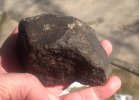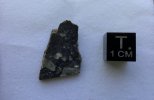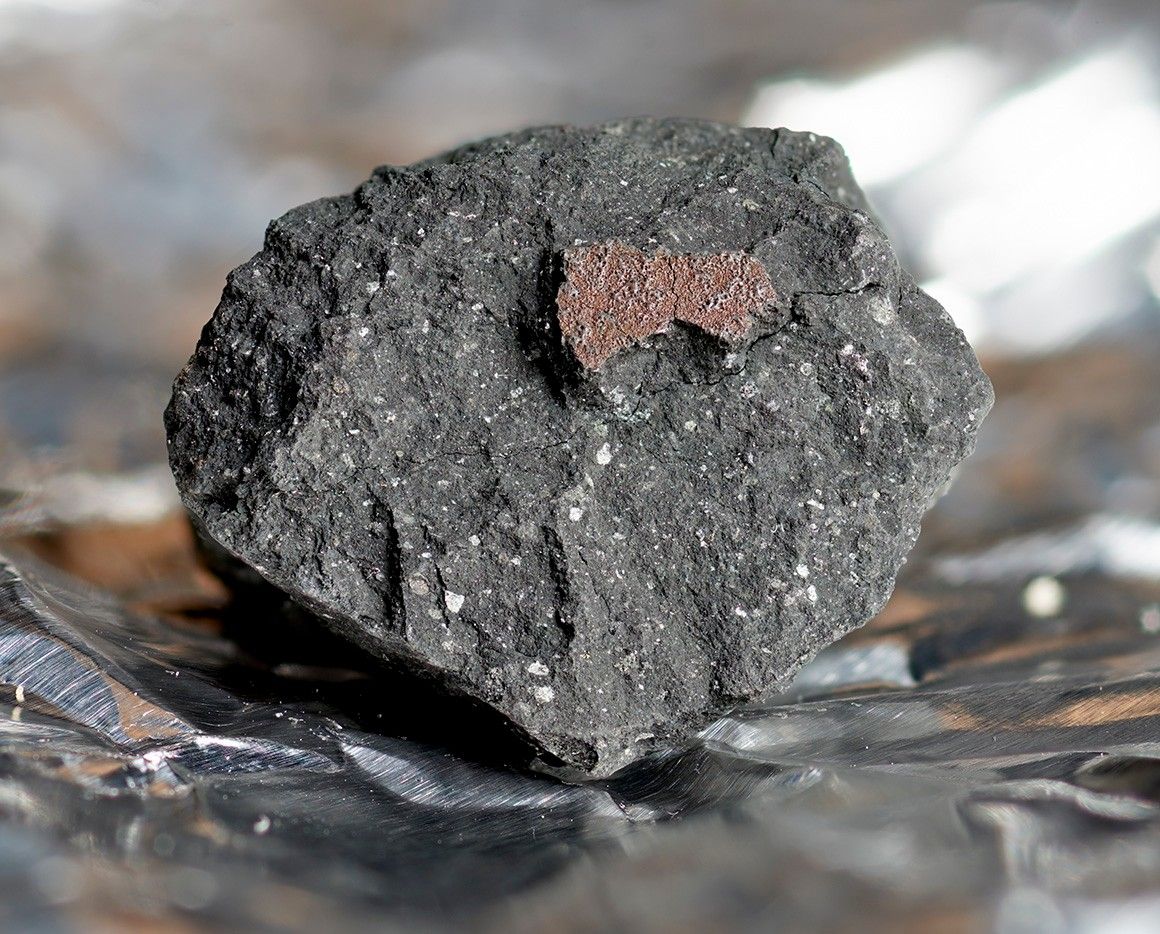No, babe, I did realize that you yourself might be joking. I was not certain, but considered it a possibility. I mean, I grant, what you wrote about selling was somewhat comical.
Anyway..
It’s just that I also thought you were going to bluff your way through meteoritics, and I chuckled at that. There was no need to do that. You could have simply admitted it’s not a subject you are that familiar with.
Every meteorite collector that I know takes it upon themselves to make a real effort to take a deep dive into the science itself. True, some collectors just like to focus on famous, historic falls. And some just specialize in one of the major classes, like nickel iron meteorites, the type most laymen visualize when they think of meteorites.
But, most of us, if we really want to best appreciate what we collect, eventually have to get up to speed on the chemistry, the petrology, and basically what the science can tell us about the early formation of the solar system. With the exception of the planetary meteorites, such as Martian samples, almost all other meteorites will represent the earliest matter that condensed out of the solar nebula. Meaning, other than planetary specimens originating from planetary bodies large enough to have internal engines, and therefore experience geological processing and the creation of younger rocks, most other meteorite types will originate from asteroidal bodies that are 4.5-4.6 billion years old. Meteorites are the oldest matter than any of us can hold in our hands. And some meteorites display inclusions that originated from a star that went nova even before our solar system existed. Pretty exciting to hold such things in one’s hand.
But, ya gotta dive into the science to really develop a knowledge of, and appreciation for, what you own when you collect space rocks. Simply put, the science is where all the excitement, and all the fun, is.
Again, focusing on learning the science, many collectors enjoy focusing on the carbonaceous chondrites class(the CC class) of meteorites. Because they are rich in carbon compounds and amino acids, and may, in the early phases of planetary formation, have been responsible for seeding the building blocks of life onto the early Earth. And such a collector will but naturally dive deeply into the science of those CC meteorites. There is no way around it if one wants to enhance appreciation for what one is collecting.
One of the things that is somewhat unique to meteorite study and collection is that there is a symbiotic relationship among meteorite hunters, collectors, and scientists. This is a bit unusual, I believe, in that because I also collect fossils and artifacts, I am familiar with the fact that many scientists in the disciplines of paleontology and archaeology are less enthusiastic about the presence of amateurs and the existence of collector markets. That is simply not the case among planetary geologists or meteoriticists.
Which brings me to that symbiotic relationship. Meteorite hunters, who also, but not all, tend to be collectors as well, depend on a market. But the collector market values classified meteorites far more than unclassified meteorites. And only scientific labs recognized and approved by the Meteoritical Society can classify meteorites and get them published in the Meteoritical Bulletin. So, the hunter, or anybody who finds a new find or recovers a new fall, submits a sample to an approved lab. The rarer the classification, the more value the new fall or find will have for a collector. And, this part is key to the symbiosis I’m talking about: the lab must receive a percentage of the new fall or find. In this way, science benefits by receiving new specimens to study, and is therefore able to add to our body of knowledge. The hunter benefits because classifieds are worth more, and, if a rare class, the value will be higher. And collectors benefit by being able to add newly classified meteorites to their collections. Hunters, collectors, and science all benefit by this symbiotic relationship at the very heart of meteorite collecting. Science has Antarctica to itself, a cold desert that for reasons I won’t go into, accumulates meteorites over time. Only scientists can collect there.
But, in places like the hot deserts of Morocco and Algeria, a huge number of meteorites have been, and still are being, recovered. Not by scientists. By Bedouins and by professional hunters. The Meteoritical Society labels all these specimens Northwest Africa, with a number assigned to them. These have been flooding the market since about the 1990’s. A boon to everyone. Again, submit to a scientific lab, and the lab must be given a percentage of the new find. So the science of meteoritics benefits with new finds. The hunter/dealer gets his classification. The collector gets a chance to add a new find, perhaps a rare lunar or Martian, to his/her collections. Symbiosis. No reason for science to resent collectors or the existence of a meteorite market.
So, what I am getting at is, as I stated, I don’t know any serious collector, including myself, who does not eagerly embrace the science itself, simply to better appreciate what they own. And amateurs can also make significant contributions of their own, to the science itself. For example, I have a close friend who is a pharmacist. He specializes in collecting carbonaceous chondrites, a type of stony meteorite. His pharmacy background provides him a strong knowledge of chemistry, one of my biggest weaknesses. I’m OK with the petrology of meteorites, but weak on the chemistry. It doesn’t come easy, but I do my best. But, he has studied the chemistry of carbonaceous chondrites so thoroughly, that he has published his studies in scientific journals. He became a noted authority on that class of stone meteorite.
So, you see, when I said to you “be careful who you speak gibberish to”, it was because, while I am certainly not a planetary geologist, or meteoriticist, I recognized that you were going to try winging your way through that science. There’s no need of that. All I tried to do, in the first place, was use what knowledge I have gained, to point out how impossible it really is to explain where all of NASA’s moon rocks came from if the Apollo missions never really took place.
Anyway, this stone, probably unattractive to most eyes, was one of the center pieces of my personal collection. I sold it recently to a friend. It’s the Allende meteorite, having fallen in Allende, Mexico, in 1969. Interestingly, the labs set up to study the original Apollo moon rocks used this large fall as a test run on their new equipment since it fell shortly before the first mission. It’s a CC, a carbonaceous chondrite, specifically a CV3 meteorite. See the white inclusions? Those are called CAI’s: Calcium Aluminum Inclusions. They originated in a distant star that went nova, and became incorporated into the original matter that condensed out of the solar nebula that became our solar system.
Space rocks like this inspire the imagination, but that imagination emerges out of knowing the science to the best of one’s ability. And every collector I know digs the science, to better understand and appreciate their specimens.
View attachment 10458
Well, since the subject was the lunar missions to begin with, it’s appropriate to add this photo. This is a 1.5 gm slice of Northwest Africa 11266(NWA 11266), a lunar regolith breccia. The 11,266th meteorite from Northwest Africa to be recognized by the Meteoritical Society, to give you some idea at how much the market has been impacted by the meteorite goldmine that are the hot deserts of NW Africa. Of course, only a small number have been lunar. When lunar meteorites first hit the market, they sold for thousands of dollars per gram. Now, some, such as this one, can be had for under $100 per gram.
View attachment 10459






